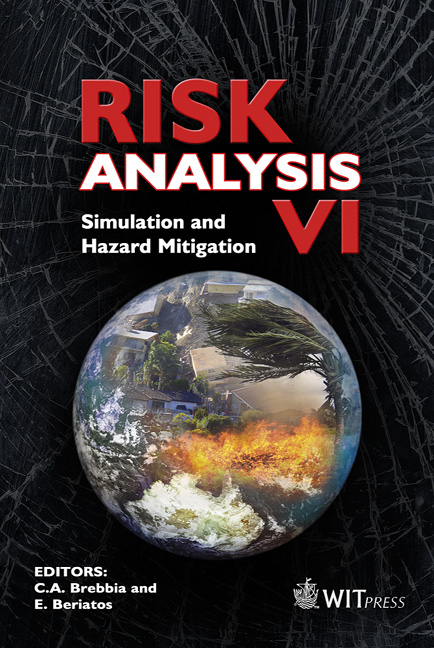Vulnerability To Torrent Processes
Price
Free (open access)
Volume
39
Pages
10
Page Range
289 - 298
Published
2008
Size
1,140 kb
Paper DOI
10.2495/RISK080291
Copyright
WIT Press
Author(s)
S. Fuchs
Abstract
In natural hazards research, risk is defined as a function of (1) the probability of the occurrence of a hazardous process, and (2) the assessment of the related extent of damage, defined by the values at risk and the vulnerability according to the intensity of the hazard process. Until now, only a little work has been carried out to determine vulnerability values for objects exposed to torrent processes, in particular to debris flows. The vulnerability values proposed in the literature show a wide range, above all with respect to medium and high process intensities. Furthermore an application of these values might lead to an overestimation of vulnerability, as an assessment for alpine torrent events has shown. In this study, data from Austria and Switzerland were used to empirically analyse and assess the vulnerability of buildings to torrent processes, and to establish a respective vulnerability function. This function was found to be valid for debris flow intensities between 0.33 m and 3.06 m, a typical range for debris accumulation on torrential fans in alpine catchments. Since the analysis was based on process intensities and is thus independent from recurrence intervals, not only the risk resulting from design events can be calculated but also every other event with a different frequency. A wider application of the developed method to additional test sites would allow for further improvement of the results and would support an enhanced standardisation of the vulnerability function, especially with respect to the possible risk-reducing effects of different mitigation measures. Keywords: risk analysis, torrent processes, debris flows, vulnerability.
Keywords
risk analysis, torrent processes, debris flows, vulnerability.





